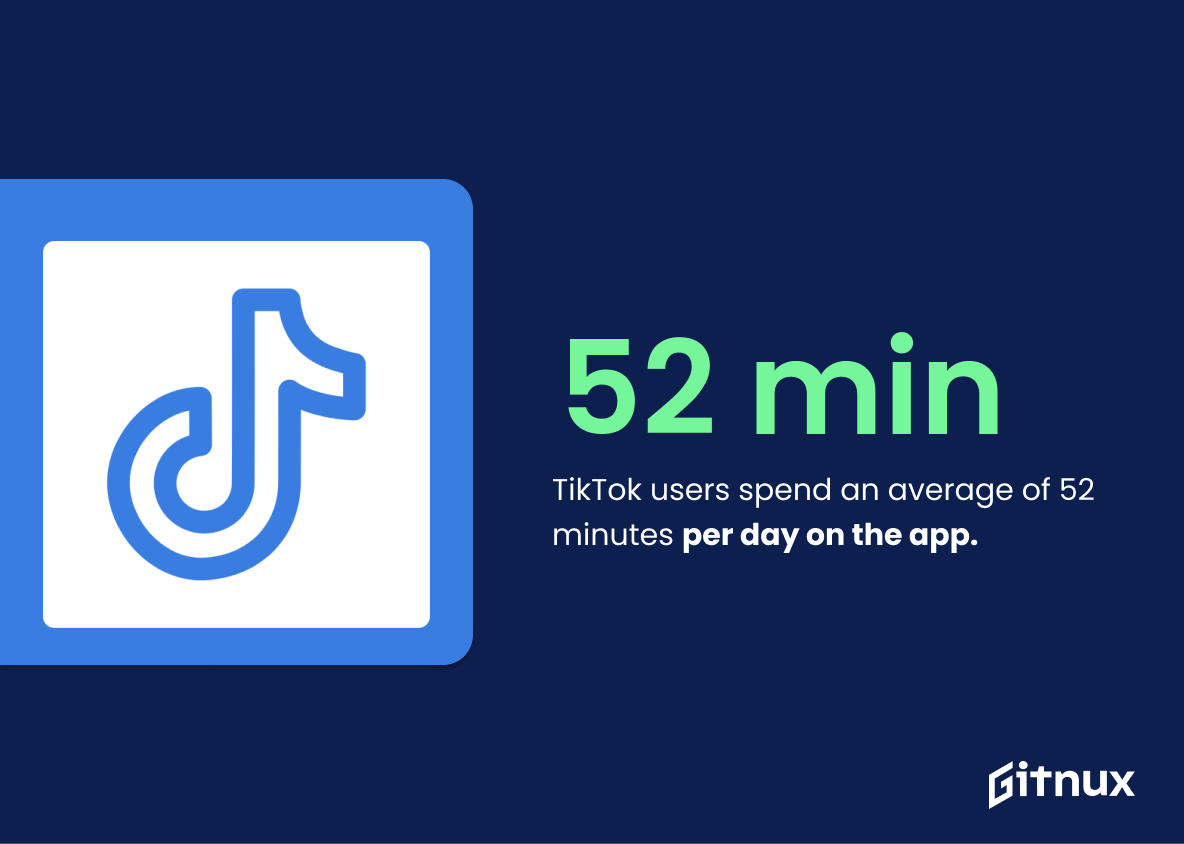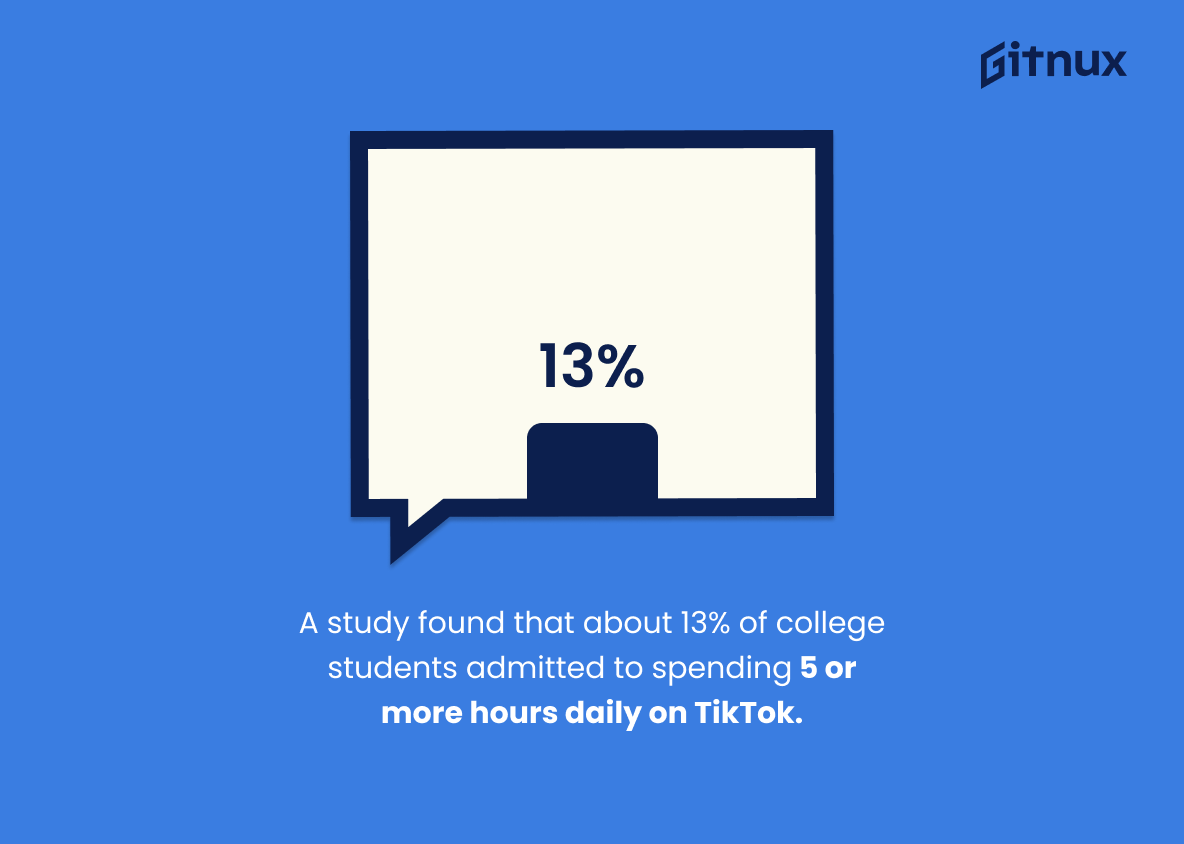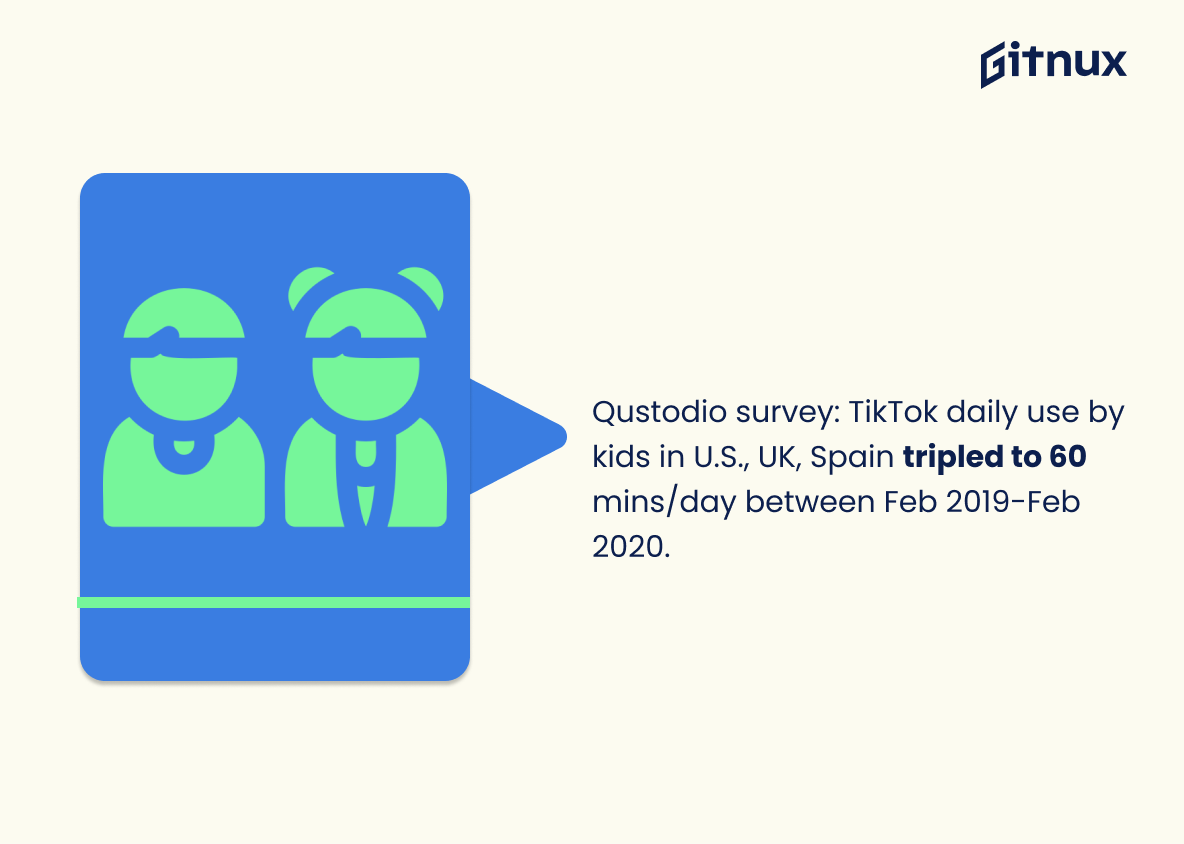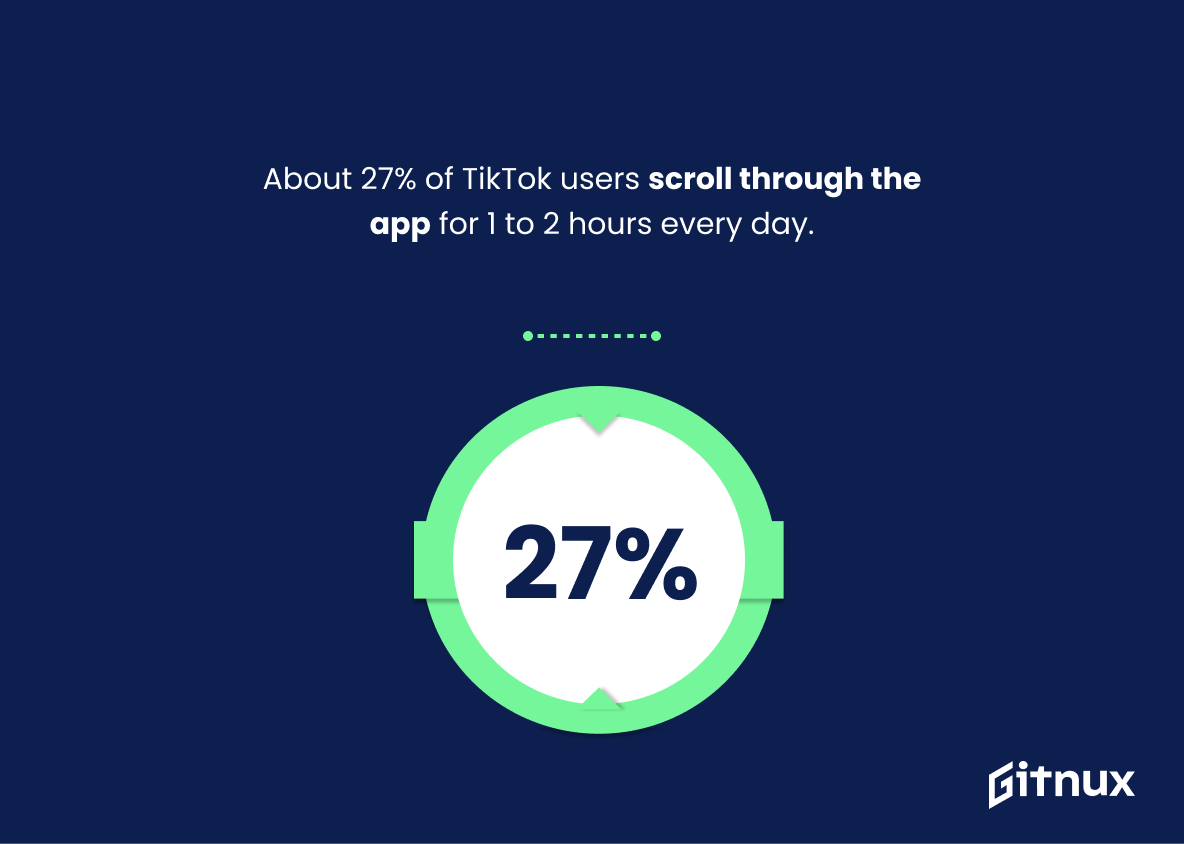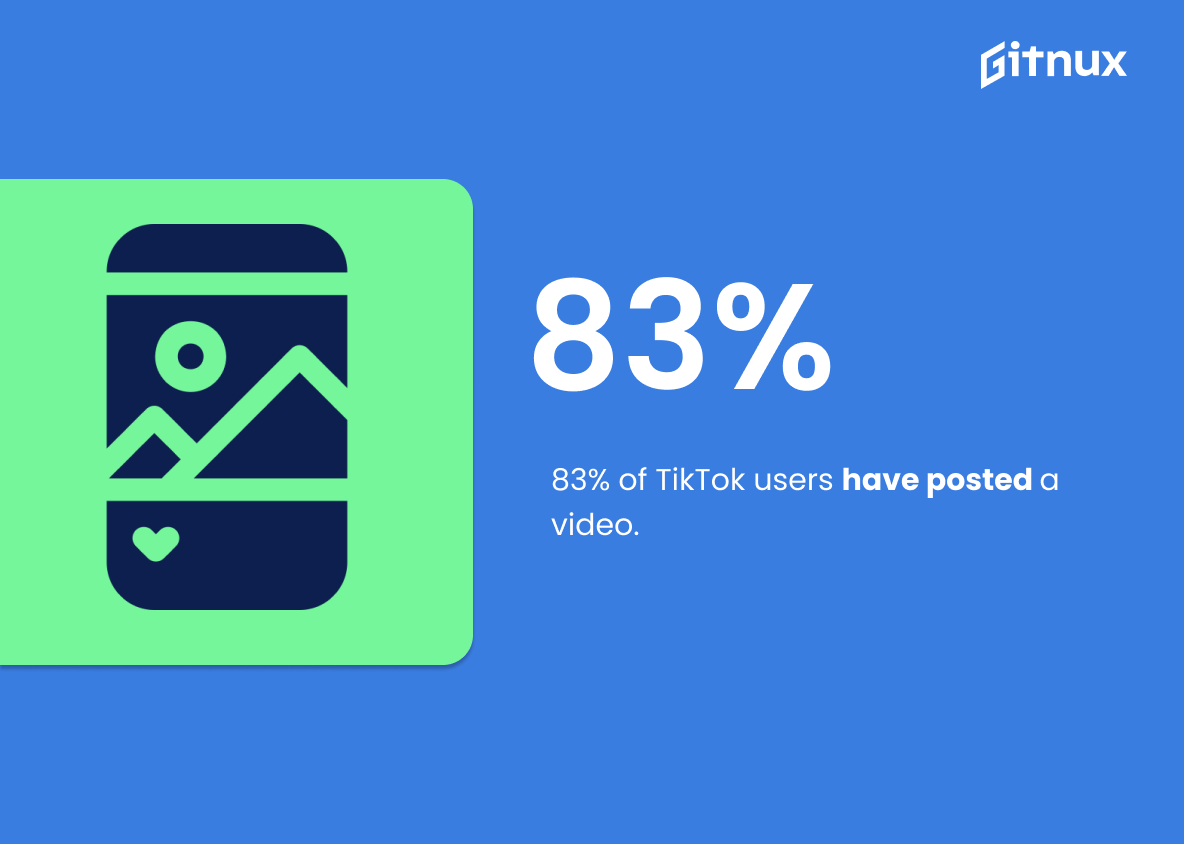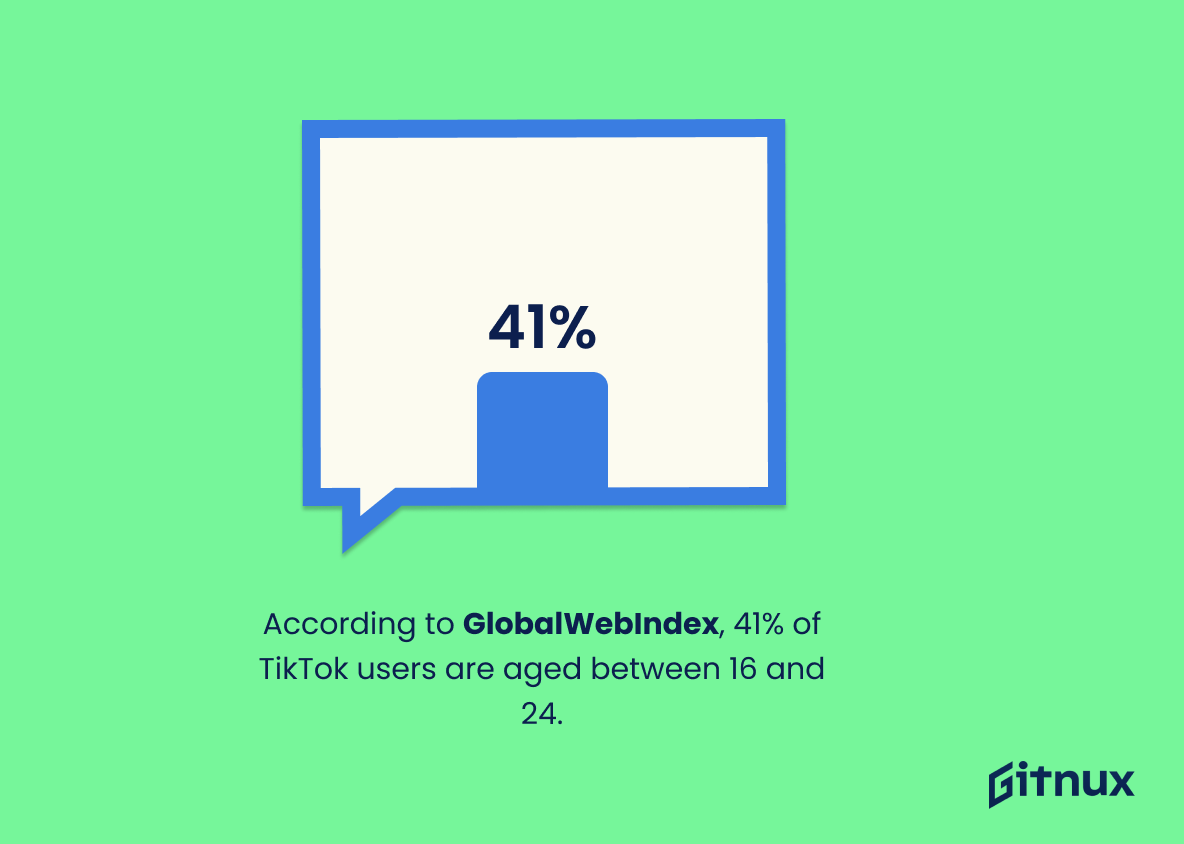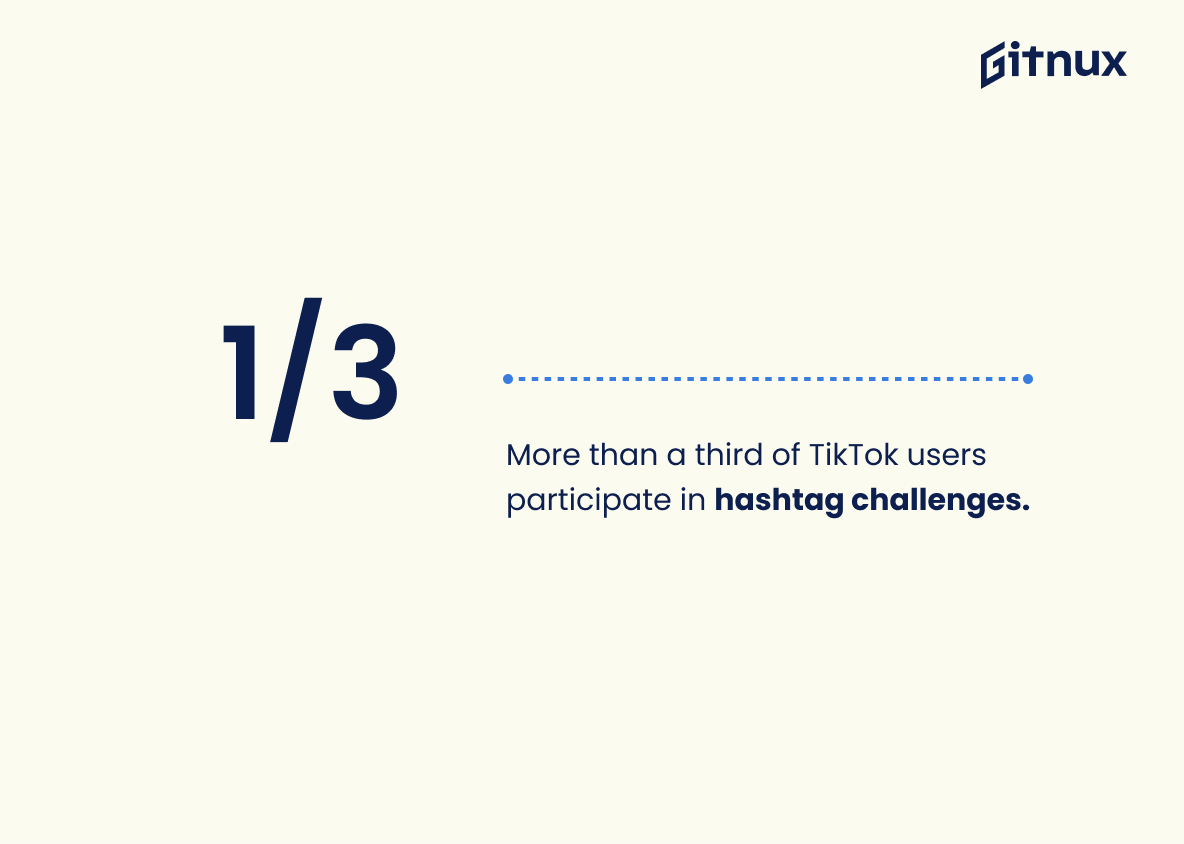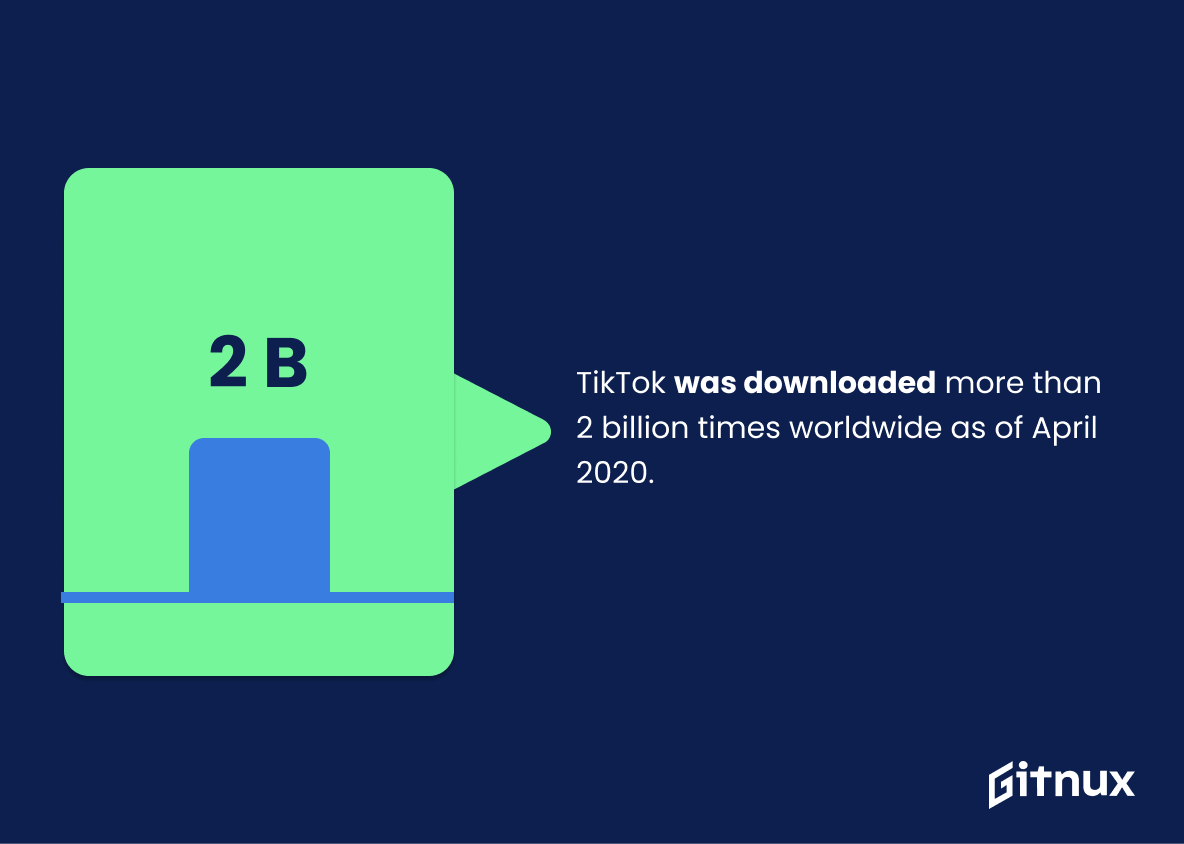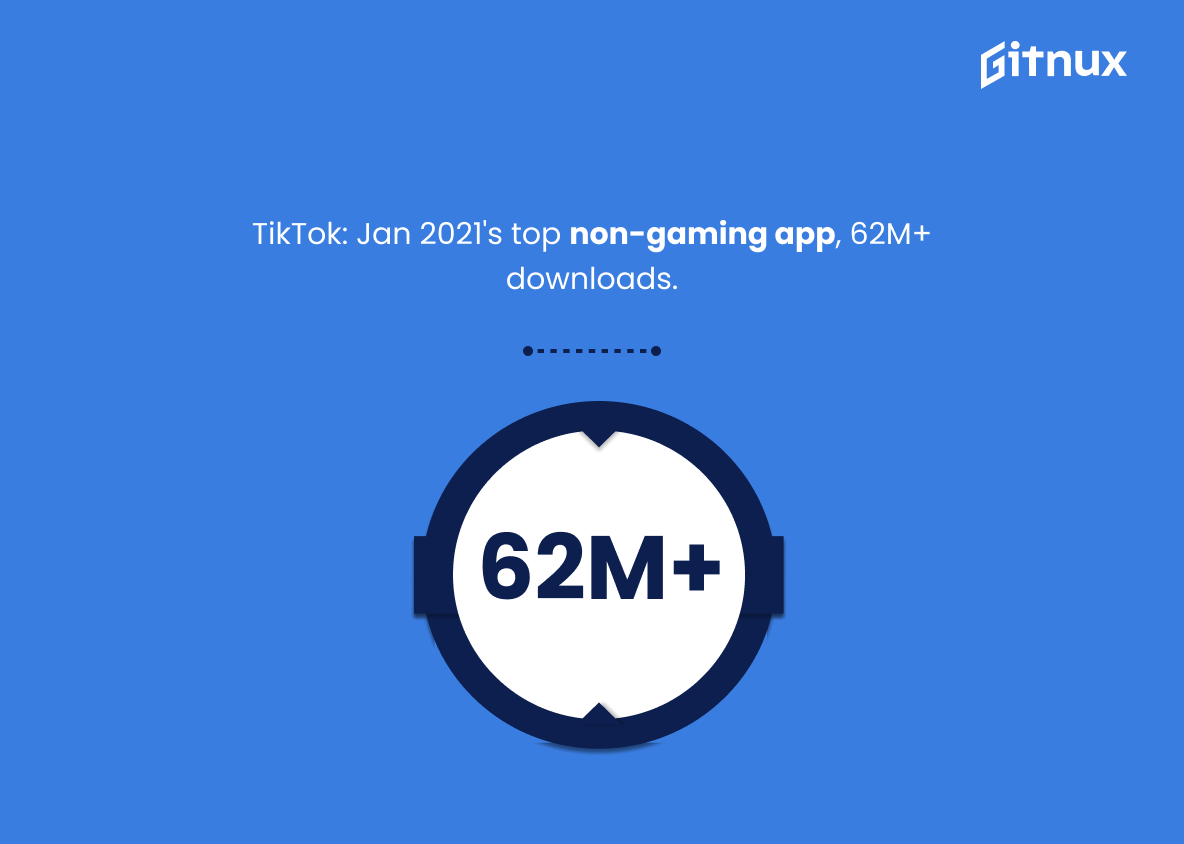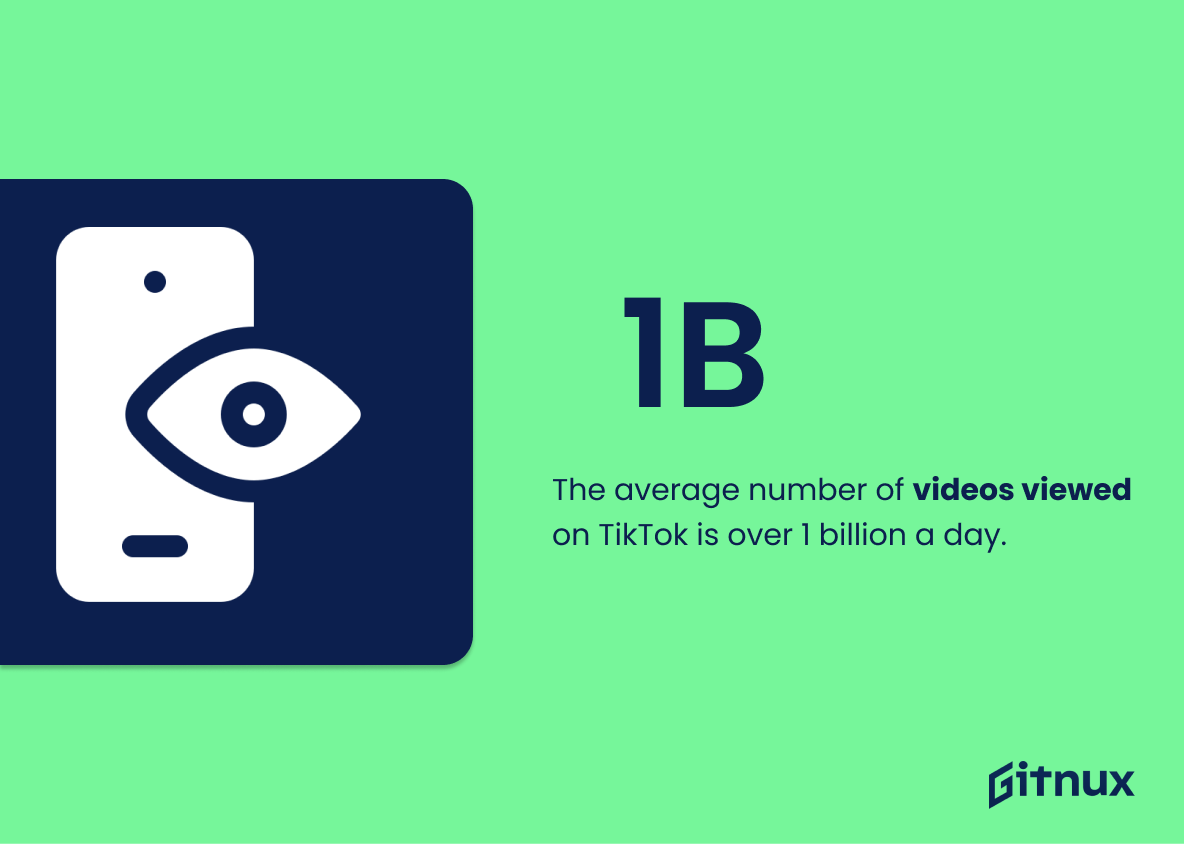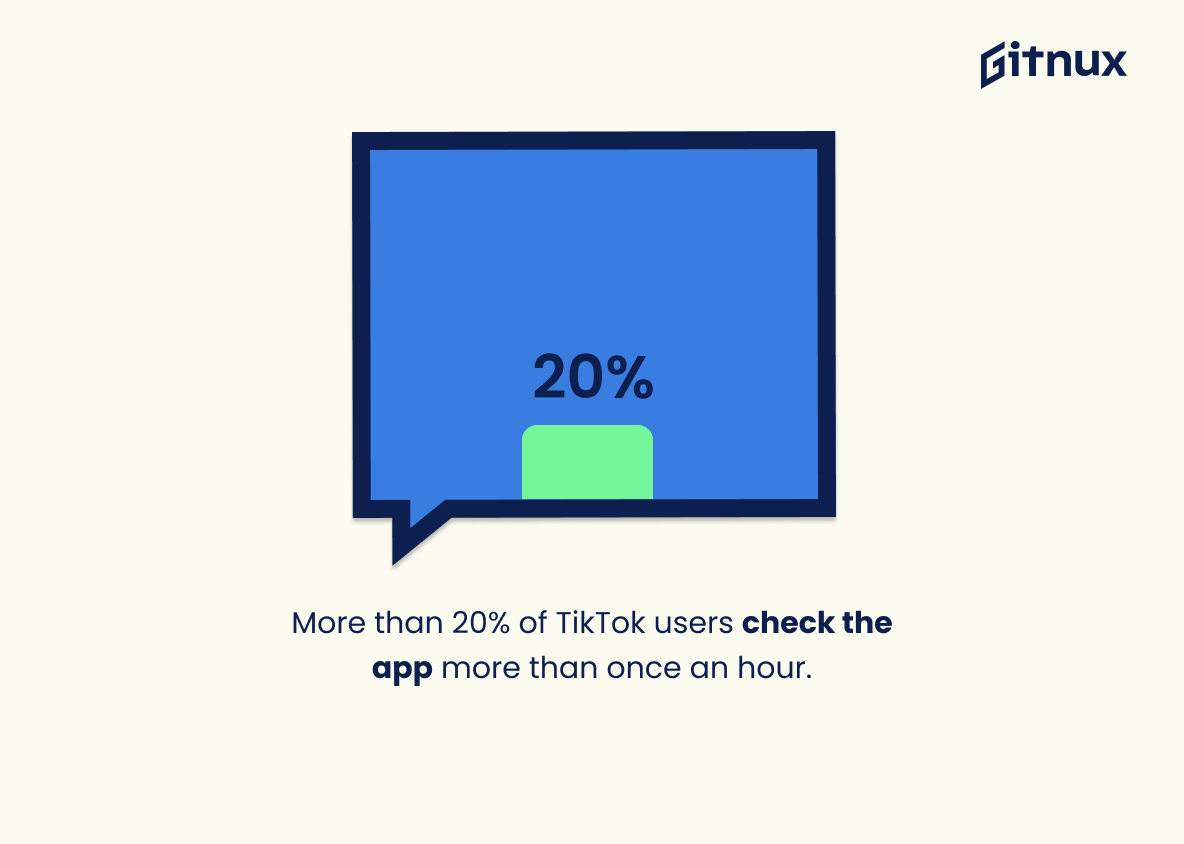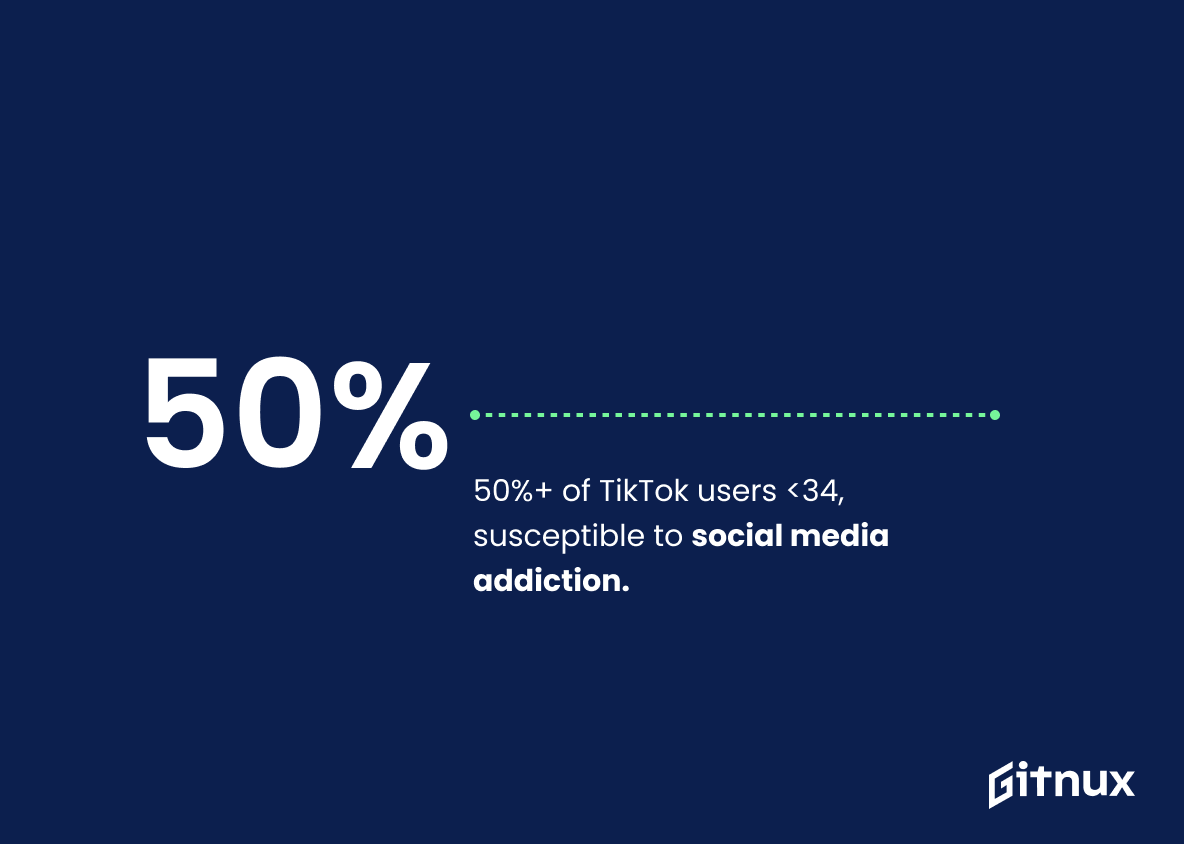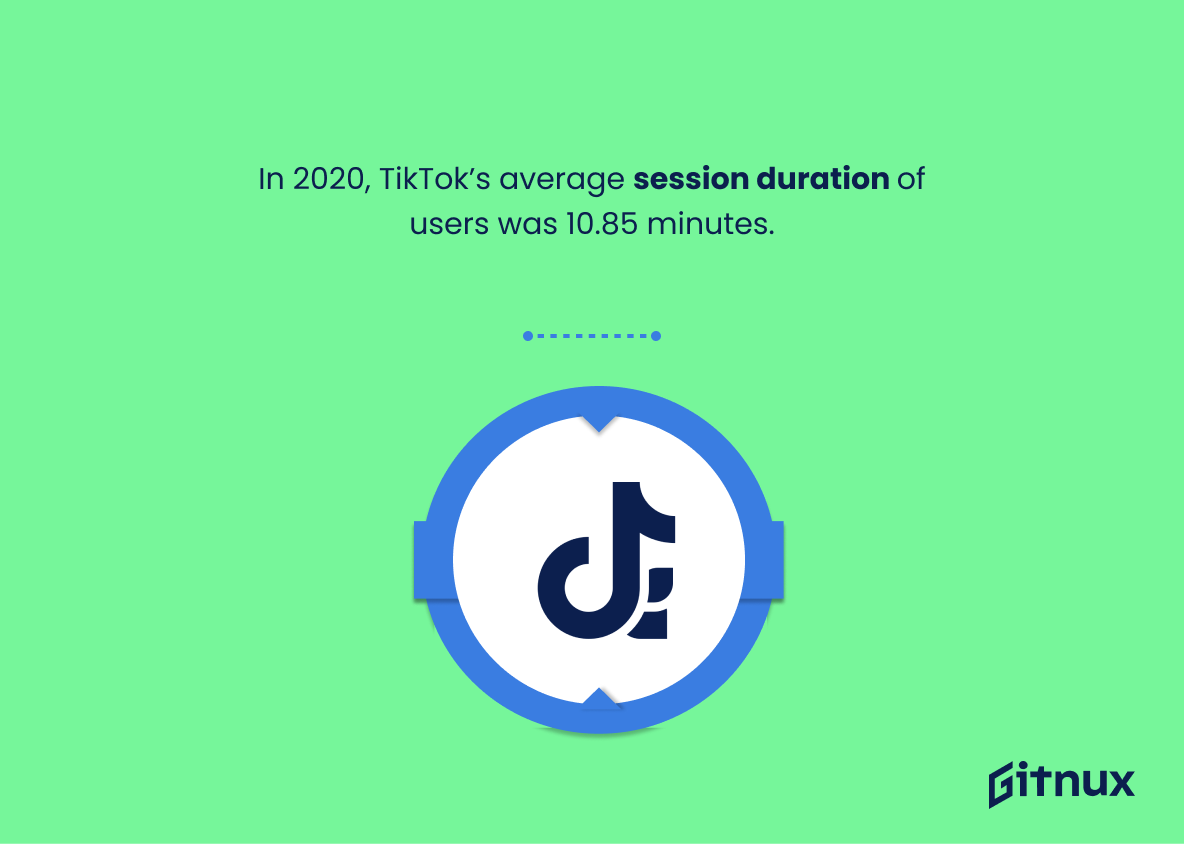In this digital era, TikTok has emerged as a global sensation, capturing the hearts of millions with its endless stream of engaging short video content. As captivating as it might be, the platform has sparked conversations surrounding the significant mounting issue of ‘TikTok addiction’. This blog post is specifically tailored to delve deep into compelling statistics about TikTok addiction, its impact, prevalence, and some insightful revelations surrounding the usage patterns across various demographics. Join us as we navigate through the quantitative aspects of TikTok addiction, providing a data-driven perspective on an issue that is more pervasive than many of us may realize.
The Latest Tiktok Addiction Statistics Unveiled
TikTok users spend an average of 52 minutes per day on the app.
Upending paradigms of habitual screen time ingestion, the observation that TikTok users dedicate a staggering 52 minutes per day on the app bestows thoughtful reflections on TikTok addiction. A full panorama of the blog post awaits as this figure crystallizes an escalating inclination towards TikTok usage. By surfacing this fact, we are not merely sharing a figure but also unraveling the magnitude of time individuals are willing to channel into this platform daily. It’s a mirror held up to the addiction magnitudes, spotlighting a potent undercurrent that demands acknowledgment, understanding, and perhaps intervention. The given statistic poignantly amplifies the omnipresence of TikTok in daily routines, and this undeniable engagement level is a silent testament to its addictive potential.
A study found that about 13% of college students admitted to spending 5 or more hours daily on TikTok.
Interestingly, this statistic of around 13% of college students confessing to spend 5 or more hours a day on TikTok resonates strongly within the narrative on TikTok addiction. In the information ocean of our blog post on TikTok Addiction Statistics, this figure serves as a stark lighthouse, illuminating the substantial time investment young adults are making on the platform. What might at first glance seem innocuous, upon deeper reflection, may kickstart the conversation about potential risks of screen addiction and effects on academic performance. This information anchors the discourse around TikTok usage patterns, helping to shape the understanding and perspective of readers on the extent of this modern digital phenomenon.
29% of users open TikTok every day.
Depicting a startling landscape of user engagement, the datum reveals that nearly one-third of TikTok users partake in daily consumption of the app. This regularity in user behavior suggests a pattern resembling addiction, serving as a staggering testimony to the app’s captivating hold. In a blog post about TikTok addiction, such a nugget of fact gives flesh to the bare bones of conceptual discussion, anchoring abstract arguments on the unwavering ground of empirical reality. It thrusts into spotlight the magnitude of TikTok habits, underlining their diffusion across the user base and the potential implications for mental health, productivity, and lifestyle.
A survey conducted by Qustodio found that between February 2019 and February 2020, daily usage of TikTok by kids in the U.S., UK, and Spain tripled to 60 minutes a day.
Highlighting an astounding growth, the revelation from Qustodio’s survey indeed adds weight to the ongoing conversation about TikTok addiction. The fact that children in the U.S., UK, and Spain have tripled their engagement with the app to 60 minutes a day unveils the striking influence and potential addictive nature of TikTok on young minds. This compelling statistic not only underscores the app’s magnetic appeal, but also brings awareness of the sharp escalation, driving deeper scrutiny from parents, clinicians, and policymakers. Essentially, these figures serve as a crucial pivot point within the narrative of our blog post on TikTok addiction statistics, incentivizing an earnest exploration into the reasons behind such a dramatic rise and potential implications for youth wellbeing and digital habits.
About 27% of TikTok users scroll through the app for 1 to 2 hours every day.
Delving into the world of TikTok addiction, one cannot overlook the fascinating statistic that around 27% of users engage with the app for 1 to 2 hours daily. This metric sits at the heart of the discussion, painting a vivid portrait of the pervasive power of TikTok, and how it manages to capture significant chunks of its users’ daily lives. Its presence within this article serves as a mirror to reflect the profound extent to which TikTok has intertwined itself with the routines of its vast user base. Therefore, it offers a significant contributing factor when exploring the psychological griphold of this social media powerhouse.
83% of TikTok users have posted a video.
Delving into the labyrinth of TikTok addiction statistics, the fact that a mammoth 83% of users have posted a video serves as an important piece of the puzzle. It paints a vivid picture of the user engagement levels on the platform, hinting at the potentially addictive behavior that could emerge. The allure of content creation appears to be not just a fringe activity, but a mainstream one, pulling in an overwhelming majority of users. Thus, it casts a revealing light on the extent to which the application has ingrained itself into users’ habits, making it a focal point in the convoluted matrix of TikTok addiction.
According to GlobalWebIndex, 41% of TikTok users are aged between 16 and 24.
Consider this: when you understand that a staggering 41% of TikTok users fall into the age bracket of 16 to 24 according to GlobalWebIndex, the reality of TikTok addiction among the youth comes into sharp focus. The age range, known for being tech-savvy and highly influenced by social media, are notably susceptible to the addictive lures of engaging content, endless scrolling, and peer interaction that TikTok offers. This large youth user base therefore amplifies the significance and urgency of addressing TikTok addiction. Hence, this statistic acts as a critical spotlight, illuminating the demographic most impacted and where prevention strategies could be most effectively targeted.
More than a third of TikTok users participate in hashtag challenges.
Delving into TikTok addiction alongside statistics brings to light the enticing pull of the platform, with a particular spotlight on hashtag challenges. Indeed, an intriguing revelation is that more than a third of TikTok users dive headfirst into these trendy contests. This data point underscores the engaging, interactive nature of TikTok’s culture, which potentially fuels user addiction.
Hashtag challenges encourage user participation, ensure consistent engagement, and create a sense of belonging among TikTok users. Participation indicates that users spend a significant portion of their time creating, practicing, editing, and posting videos to stay trendy, possibly leading to habit formation or addiction.
Moreover, embedded within the appeal of hashtag challenges is the desire for user recognition. The thought of gaining likes, comments, shares, or ‘going viral’ can be a compelling allure, keeping users glued to their screens, hence contributing to the platform’s addictive nature. Therefore, our focal statistic paints a portrait of the hypnotic nature of TikTok, an important factor to acknowledging and comprehending the depth of TikTok addiction.
TikTok was downloaded more than 2 billion times worldwide as of April 2020.
The dazzling figure of 2 billion global downloads of TikTok as of April 2020 paints a vivid picture of its widespread influence. Such a staggering number underlines the application’s magnetic allure, turning it from just a popular app into a global, cultural phenomenon. This astronomical reach provides fertile ground for increasingly prevalent TikTok addiction, making it a relatively unexplored yet critical concern in digital wellness. The download statistic thus transforms into a direct mirror reflecting the scale of potential dependence on this online sensation. This nugget of information is therefore crucial while exploring the fabric of TikTok addiction statistics.
TikTok was the most downloaded non-gaming app worldwide for January 2021 with more than 62 million installs.
Dive into this enlightening fact: In January 2021, TikTok wasn’t just an app people casually added to their smartphones. No, it was the reigning champion, the most downloaded non-gaming app worldwide boasting more than 62 million installs. As we broach the topic of TikTok addiction statistics, this magnitude of popularity paints a vivid backdrop. It speaks to the incredible reach, lofty engagement and potentially, the gripping hold that TikTok has on its users. In terms of addiction, it’s worth noting that TikTok’s magic doesn’t end with a single download but spans through countless scrolls, views, and hours spent – a phenomenon critical to our dialogue on TikTok addiction statistics.
The average number of videos viewed on TikTok is over 1 billion a day.
Diving into the heart of the TikTok addiction phenomenon, one statistic stands out starkly; it’s hard to ignore the jaw-dropping figure of over 1 billion videos viewed on TikTok daily. This monumental number isn’t just impressive—it underscores the magnetic pull this platform has on its user base. Indeed, the staggering number of daily views is a testament to the app’s hypnotic allure, keeping users immersed in an endless stream of entertainment and, inadvertently, leading to higher usage rates and potential addiction. In a society where time is a precious commodity, the fact that such an immense number of videos is being consumed daily raises pertinent questions about just how much of our collective hours are logged into the TikTok universe, pointing towards the scope and intensity of TikTok addiction. Thus, in our quest to unravel TikTok addiction statistics, this figure serves as an ominous lighthouse illuminating the vast ocean of TikTok’s immersive influence.
More than 20% of TikTok users check the app more than once an hour.
Delving into the depths of TikTok addiction statistics, the highlight is certainly the revelation that over 20% of TikTok users check the app more than once an hour. This data point paints a picture not just in vibrant hues, but in stark contrasts, showcasing the captivating allure of this social media platform.
The magnetic pull of this app, strong enough to compel every fifth user to glance at their screens multiple times every hour, underscores the daunting reality of digital addiction. Reflecting the tendrils of TikTok’s influence reaching deep into users’ daily routines, this statistic adds a critical layer to our understanding.
Beholding this data, we’re compelled to question: are we merely witnessing a popular trend or confronting a rising wave of digital dependency? This statistic, then, doesn’t merely illuminate; it challenges us, prompting a crucial dialogue on the intricacies of TikTok use and its implications. It’s an undeniable emblem of our intertwined connection with digital technology.
More than half of TikTok users are under the age of 34, making them prone to developing addictions to social media trends.
Diving into the ocean of relevance, this fascinating statistic highly underscores the vital role age demographics play in understanding TikTok’s addictive allure. With the platform predominantly enticing the younger population, specifically those under the age of 34, it becomes glaringly apparent this young demographic can easily fall prey to social media trends. This susceptibility provides a fertile ground to foster addictive behaviors. It’s akin to aligning the pieces of a larger puzzle, highlighting the importance of age as a major factor when analyzing TikTok addiction statistics and giving added potency to the underlying narrative of the blog post.
Almost 68% of TikTok users watch someone else’s video and 63% like someone else’s video.
Delving into the labyrinth of TikTok addiction statistics, one can’t help but highlight a compelling figure – that almost 68% of users indulge in viewing other’s videos while the hands of 63% don’t hesitate to hit the ‘like’ button. This striking data point is vital for shedding light on the strength of engagement and interaction within the platform. It doesn’t just demonstrate the platform’s captivating potential, but also signals how voracious appetite for content consumption coupled with an eagerness to express approval can serve as a potent cocktail fueling addiction. This cycle of viewing and liking initiates a feedback loop that keeps users hooked, encouraging them to browse longer, like more, and in turn, get more entangled in the web of TikTok.
In 2020, TikTok’s average session duration of users was 10.85 minutes.
Unveiling an intriguing picture, the 10.85 minutes average session duration of TikTok users in 2020 delves deeper into the power of this platform to captivate and absorb an individual’s attention span. This nugget solidifies the premise of TikTok addiction, hinting at the magnetic pull the app exudes over its users, enticing them to immerse in the world of short, quirky video content for longer than the standard bite-sized social media engagements. This formidable grasp on users’ time lends credibility to the rising concern over TikTok addiction, and serves as quantifiable proof in narrating the tale of this digital obsession.
The average TikTok user spends 13 hours per month on the app
Peeling back the layers of this fascinating statistic uncovers the deep-rooted essence of TikTok addiction, vividly painting a picture of the average user devoting roughly 13 hours per month to the app. In the grandeur landscape of your blog post on TikTok Addiction Statistics, this nugget of information shines disastrously bright. It serves as solid evidence of the growing dependency on the popular video-sharing platform, highlighting the grip TikTok has on its users’ time, often at the expense of other important aspects of life—be it work, studies, or real-life social interactions. Further, it underscores the startling reality of how these seemingly innocent ‘minutes’ or ‘hours’ can snowball into a hefty chunk of our lives—acting as a quiet reminder of the hidden cost of a harmless scroll. In essence, this statistic breathes life into the alarming epidemic of TikTok addiction, marking its relevance to your informative blog post.
49% of teenagers have used TikTok. The constant exposure contributes to possible addiction.
In delving into the realm of TikTok addiction statistics, the revelation that 49% of teenagers have engaged with the platform casts a significant spotlight. This chunk of youthful users interacting with such a pervasive social media app lays the groundwork for understanding the gravity of potential addiction scenarios. Consequently, the constant exposure implied by this statistic offers a vivid portrayal of the extent to which TikTok’s allure captivates the impressionable minds, facilitating the spiral into addiction. This profound connection between user engagement and potential addictive behavior clarifies the urgency in addressing this issue, enhancing the relevancy and profundity of our blog post on TikTok addiction.
Conclusion
In sum, the rise in TikTok usage has led to a skyrocketing addiction rate, particularly among teens and young adults. It’s a platform that has become a daily habit for many, consuming vast amounts of their attention and time. These TikTok addiction statistics should act as a reminder for us to consider the power and influence of this social media giant. They prompt us to question how we interact with the digital world and the potential implications it may have on our mental and emotional wellbeing. As we move forward, we must strive towards establishing a healthy, balanced relationship with social media platforms like TikTok, without allowing it to control or overrun our lives.
References
0. – https://www.sensorTower.com
1. – https://www.www.globalwebindex.com
2. – https://www.www.worldometers.info
3. – https://www.security.org
4. – https://www.www.oberlo.com
5. – https://www.www.jstatsoft.org
6. – https://www.newsroom.tiktok.com
7. – https://www.www.ispreview.co.uk
8. – https://www.www.statista.com
9. – https://www.backlinko.com
10. – https://www.www.businessofapps.com
11. – https://www.www.klear.com
12. – https://www.www.digitalmarketing.org
13. – https://www.www.wired.com
